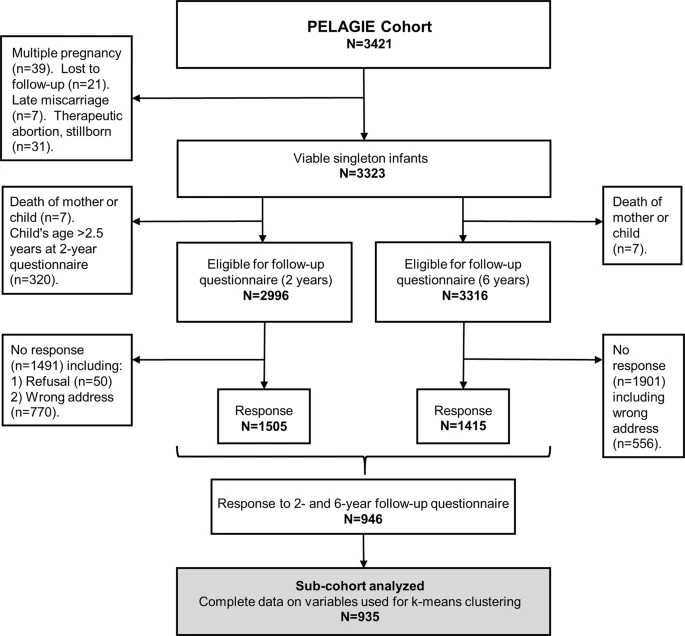Article | OPEN |
Katharina Apel, Nathalie Costet, Anthony Chapron, Sylvaine Cordier, Christine Monfort, Cécile Chevrier & Fabienne Pelé
Abstract

Childhood asthma and allergies are particularly prevalent diseases. Our objective is to identify respiratory and allergic phenotypes from birth to 6 years of age, and to explore their environmental determinants, especially those related to the home environment. Data on respiratory and allergic health outcomes and domestic environmental exposure were collected for 935 mother–infant pairs from a longitudinal mother–child cohort based on mothers, included before 19 weeks of gestation in Brittany between 2002 and 2006. Information was obtained by self-administered questionnaires completed by parents at inclusion, delivery, and when the child was 2 and 6 years old. Kml3D clustering was used to describe profiles of children who shared similar trajectories of symptoms as phenotypes. Association with environmental determinants was estimated by polytomous logistic regression. Five phenotypes were identified: a reference group characterized by low symptom levels (31.1%), a transient cough phenotype (36.5%), an eczema/cough phenotype (12.3%), a wheeze/cough phenotype (11.8%), and finally a mixed phenotype (8.0%). The wheeze/cough profile was associated with postnatal exposure to glues used in renovation activities (aOR 2.3 [1.2–4.7]), and the mixed phenotype with postnatal exposure to paint (aOR 2.1 [1–4.5]). The phenotypes observed showed some consistencies with those seen in previous studies. Some exposures associated with respiratory/allergic phenotypes observed in this study are avoidable. If confirmed by further research including interventional trials, home-based environmental counseling could be a possible prevention target for primary care professionals.

